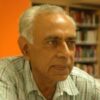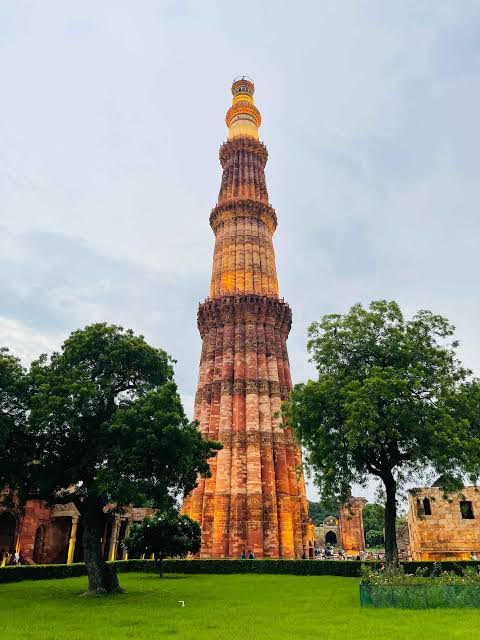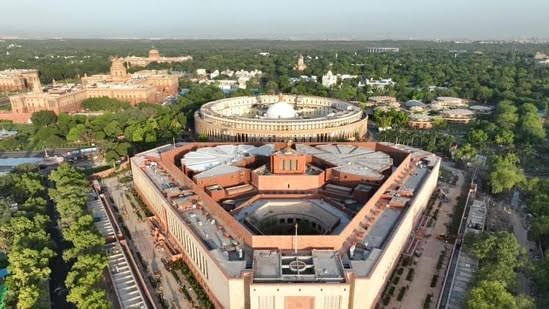Delhi and Its Features
TRANSCEND MEMBERS, 10 Jul 2023
Dr. Ravi P. Bhatia – TRANSCEND Media Service
Delhi is the capital of India and is also important historically, politically, culturally. Its population and buildings, institutions, roads, highways have shot up in the last few years and it continues to grow in all directions.
The Emperor Shah Jahan (1592 — 1666) who constructed the Taj Mahal building in Agra, also constructed the Lal Quila (Red Fort) structure in Delhi along the banks of the river Yamuna. The Fort was not just a huge building but it allowed many activities to continue by people who could be accommodated inside the Fort. These days the Independence Speech of the Indian Prime Minister is delivered from the ramparts of this Fort on August 15. The region in front of the Fort has many markets as well as large number of people living nearby. Many religious buildings — church, temple, mosque, gurudwara are also located near by. Earlier a mini train used to ply in front of the Fort — but discontinued now.
Taj Mahal is a beautiful white marble building in Agra that was constructed in 1632 — 1653 on the banks of the river Yamuna. It was built by the Indian emperor Shah Jahan in the memory of his wife Mumtaz Mahal. It is a UNESCO heritage building that attracts large number of visitors from all over the world for its beauty and architecture .
There are many other buildings that have been built in many parts of the country and also in Delhi. One ancient structure is Qutab Minar in the southern part — Mehrauli, of Delhi. Its foundation was laid by Qutubdin Aibak in 1199. It is about 72 m high and has five storeys with circular balconies. Earlier, people could climb up its stairs to reach its top, but unfortunately some people committed suicide by jumping from the Minar. Now people are not allowed to climb. The Minar, made of red sand stone was constructed as a victory tower. It is also a UNESCO heritage building.
Apart from the Muslim architecture of monuments or buildings, there are several beautiful temples, mosques, churches and Sikh Gurdwaras in Delhi. The churches were constructed by the British colonial power. In addition they also constructed the uniquely beautiful market in central Delhi which is now known as Connaught Place or just CP. Other buildings have also been built by the British — one of which was the building that is now the main building of Delhi University. This building used to accommodate senior British officers till the Rashtrapati Bhawan (Presidents Building) was built on the Raisina Hill.
The architects of the beautiful Rashtrapati Bhawan were Sir Edwin Lutyens and Herbert Baker. It was built for the British Viceroy when India was ruled by the British colonial power. The Indian Parliament building is circular in shape, and is built near the Rashtrapati Bhawan.
Delhi has several Universities — Delhi University, JNU and others. A well-known St Stephens College is also located near the sprawling Delhi University Campus. The Delhi University is now a century old institution
Earlier, the Rashtrapati Bhawan used to accommodate the British Governor General or Viceroy; now the Indian President lives in the large sprawling structure. It has several huge halls and sometimes it is used for giving oath of office to important officers such as chief of Army or Navy, etc. Some eminent persons also are invited to give their lectures in these halls.
The Rashtrapati Bhawan is occasionally used for housing important foreigners like Presidents or Prime Ministers or senior officers of several countries. Many decades ago, the British Queen Elizabeth II also stayed in this building when she visited India.
When India gained independence from British rule in 1947, Delhi was much smaller both in terms of its population and area. Now the capital city has grown in size and population. New buildings — offices, housing structures, academic institutions (IITs , Colleges) have come up in addition to some countries that have built their Embassies here. Its current population is about 32 million. The population is so large, partly because many people from villages and small towns come for employment and education in Delhi.
The original parliament building that is circular in shape, still exists but its functioning was restricted because of its size. Additional space was required. A new triangular shaped parliamentary building has recently been constructed next to the earlier parliament building. It was dedicated to the nation by the Indian Prime Minister Mr Modi only recently, on May 28, 2023.
As observed from the above notes, Delhi has grown in all respects — population wise, politically, culturally and socially. How it will grow in the future is anybody’s guess.
______________________________________________
 Dr Ravi P Bhatia is a member of the TRANSCEND Network for Peace Development Environment, an educationist, Gandhian scholar and peace researcher. Retired professor, Delhi University. His new book, A Garland of Ideas—Gandhian, Religious, Educational, Environmental was published recently in Delhi. ravipbhatia@gmail.com
Dr Ravi P Bhatia is a member of the TRANSCEND Network for Peace Development Environment, an educationist, Gandhian scholar and peace researcher. Retired professor, Delhi University. His new book, A Garland of Ideas—Gandhian, Religious, Educational, Environmental was published recently in Delhi. ravipbhatia@gmail.com
Tags: Delhi, India
This article originally appeared on Transcend Media Service (TMS) on 10 Jul 2023.
Anticopyright: Editorials and articles originated on TMS may be freely reprinted, disseminated, translated and used as background material, provided an acknowledgement and link to the source, TMS: Delhi and Its Features, is included. Thank you.
If you enjoyed this article, please donate to TMS to join the growing list of TMS Supporters.

This work is licensed under a CC BY-NC 4.0 License.

